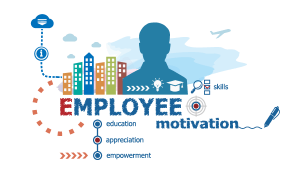
Many of us are struggling today to create viable solutions during this new normal. The challenge is we don’t have a crystal ball to foresee new options. As a result, we default to the same old ways because it seems easier and faster. But problems will arise when outdated solutions get in the way of real results because we missed important details.
Now, more than ever, it’s important to work with and through your team for solutions. The process builds confidence and trust in each other, while creating new momentum for better solutions. So, stop relying on your own counsel and set aside the excuse that it takes too much time to ask for others’ input! Listen now or pay later!

6 Ways to Create Win-Win-Win Solutions
- Identify the real issue. How many times have you created solutions only to learn it wasn’t the real issue? This occurs when team members are afraid to tell the truth. They fear the consequences of speaking up and being judged. Company politics also squelches getting real. To overcome these barriers, deep dive by asking good open-ended questions. Be willing to listen to what you don’t want to hear (e.g., poor team performance, bad system design, lack of training, etc.). Armed with the truth, you and your team can now create win-win-win solutions.
- Accept potential solutions that are not your own. How many times have you stopped listening to ideas that were not your own? Yes, this happens more often than you think! This bad habit limits your teams from offering new possibilities. Be open, listen, and be curious! Create three viable options (Rule of 3) before determining which one to pursue first.
- Encourage each team member to share. Inclusion is key. Ask each and every team member for their input. Go around the table, whether it’s virtual or on-site. Then, do it again. Write everything down so all team members can see the information during the meeting.
- Value contributions. Don’t judge! While you may argue some ideas are nonsense, be patient and trust the process. Some ideas will be off-the-wall, some ideas may be before their time, and others will be the same old ones. But these will spark solutions if you value each person’s ideas! The process also creates energy and momentum for moving forward.
- Use critical thinking before aligning on the final solution. Conduct due diligence to uncover any legal, financial, or other limitations that will impact your chosen solution. This requires you and your team to deep dive behind the internet headlines. Remember, while the solution may have worked for your competition or in your best friend’s company, it does NOT mean it will be appropriate for you and your business. That’s why you use the “Rule of 3.” When you don’t become emotionally attached to only one solution, you are less likely to overlook critical key points.
- Manage the bumps and distractions along the way. Team conflict, new budget constraints, or new legal concerns (to name a few) can derail any solution. Don’t let it stop you or get you stuck! Talk with your coach to work through the challenges and learn from them. It’s your role to manage these roadblocks along the way and create win-win-win solutions.
©Jeannette Seibly, 2021 All Rights Reserved
Jeannette Seibly is The Leadership Results Coach. She has been an award-winning executive coach, management consultant, and keynote speaker for over 28 years. She is an expert in guiding leaders and their teams to get unstuck and achieve dynamic results. Contact Jeannette for a confidential conversation.
Discover why team upsets and frustrations cannot be ignored. No! Waiting it out won’t solve it!
A Note about Creating Viable Solutions from Jeannette. Too often we review the tactics we’ve used in the past to create solutions for today. The problem is, relying on the same old ways of doing business during the new normal will derail results. “Listen now or pay later!” Take the time to create new viable solutions. It doesn’t need to be time-consuming or difficult! Review this week’s 6 Tips to keep you moving forward! If you get stuck, contact me to start a confidential conversation.

















